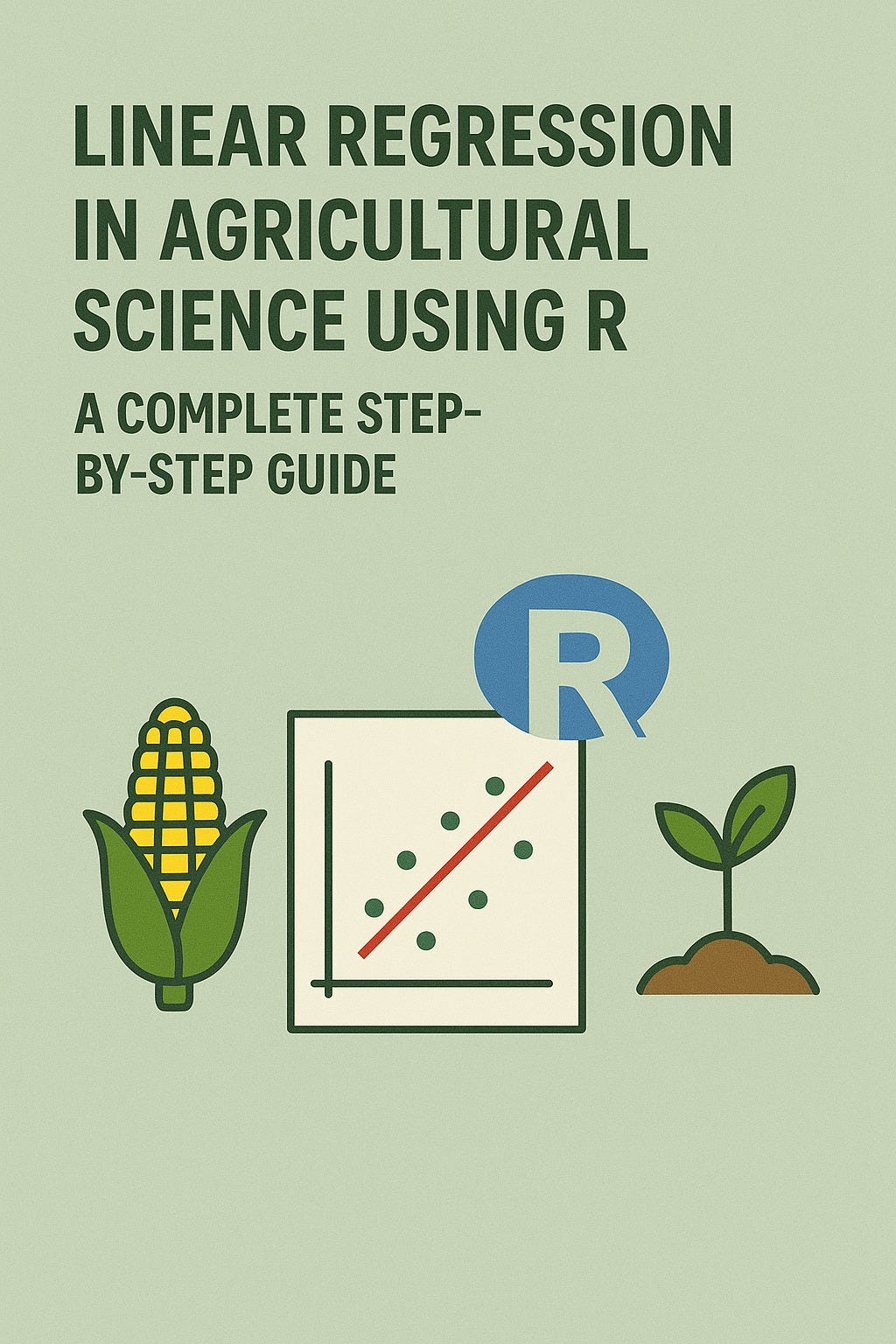Linear Regression in Agricultural Science Using R: A Complete Step-by-Step Guide
This article teaches how to apply linear regression in R to analyze and interpret the relationship between agricultural inputs like fertilizer and outcomes like crop yield, equipping readers with practical skills for data-driven decision-making in farming and agronomic research.
Introduction
Agricultural science has become increasingly data-driven, with farmers, agronomists, and researchers using statistical models to better understand the factors influencing crop productivity. Among these models, linear regression is a fundamental technique used to evaluate the relationship between one or more predictor variables and an outcome variable.
This guide provides a hands-on walkthrough of applying linear regression in R, a powerful statistical programming language. We'll use an agricultural example — modeling wheat yield as a function of fertilizer application — to demonstrate how linear regression can guide informed decisions in farming and research.
By the end of this article, you'll be able to:
Build and interpret a linear regression model in R
Evaluate model assumptions and performance
Make predictions and derive actionable insights
Understanding Linear Regression in Agricultural Applications
What Is Linear Regression?
Linear regression is a statistical technique used to model the relationship between a dependent variable (response) and one or more independent variables (predictors). In simple linear regression, there's one independent variable:
Y=β0+β1X+εY=β0+β1X+ε
Where:
( Y ) = Dependent variable (e.g., crop yield)
( X ) = Independent variable (e.g., fertilizer)
( \beta_0 ) = Intercept
( \beta_1 ) = Slope
( \varepsilon ) = Random error
Why Use Linear Regression in Agriculture?
Some common applications include:
Predicting crop yield based on inputs like fertilizer or irrigation
Analyzing the impact of weather on growth
Estimating soil response to amendments
Guiding input optimization strategies
Defining the Agricultural Problem
In this guide, we’ll explore a real-world scenario:
Research Question:
How does the quantity of fertilizer applied (kg/ha) affect wheat yield (tonnes/ha)?
Variables:
Independent Variable (X): Fertilizer applied
Dependent Variable (Y): Wheat yield
Our objective is to fit a regression model that helps us quantify this relationship and use it to predict future yield outcomes.
Creating and Exploring the Dataset in R
Step 1: Load Required Libraries
# Load necessary packages
library(ggplot2)
library(dplyr)
library(broom)
Step 2: Generate the Dataset
We simulate data for 100 wheat plots. Fertilizer levels vary between 50 and 150 kg/ha, and yield increases with fertilizer plus some random variation.
Keep reading with a 7-day free trial
Subscribe to AI, Analytics & Data Science: Towards Analytics Specialist to keep reading this post and get 7 days of free access to the full post archives.




